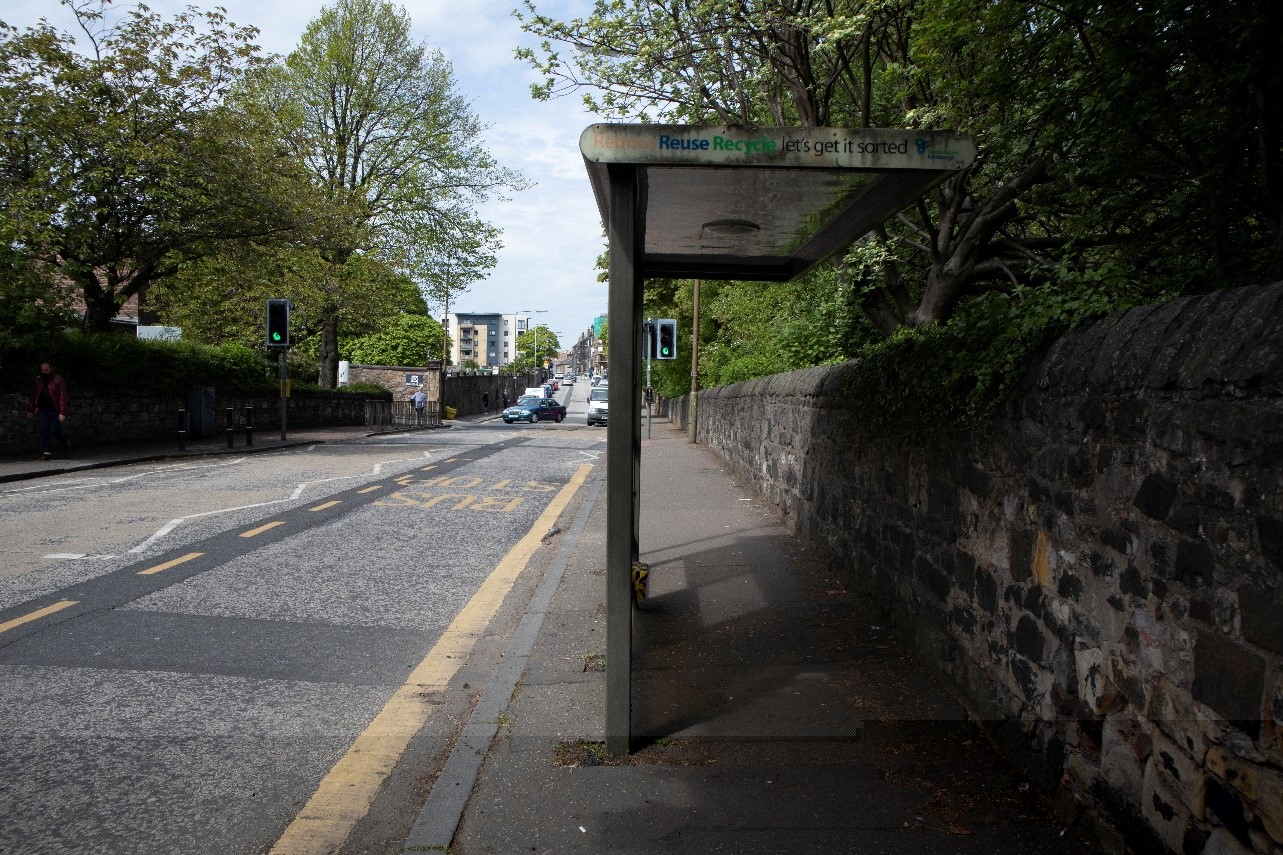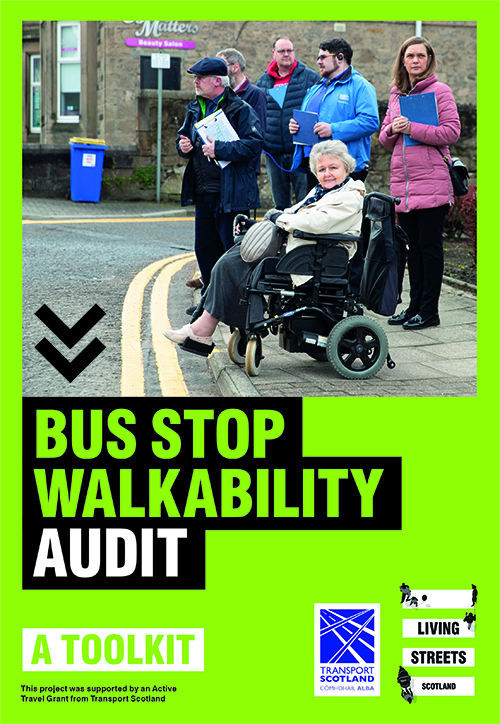What the barriers are to walking to and from local bus stops?
Living Streets Scotland worked on a project across 20 Scottish communities, which explored issues affecting the walking environment on approach to bus stops, as well as the condition of the bus stops themselves.
Our Bus Connectivity Project worked with communities and local authorities to look at:
- Walking environment on approach to bus stops/shelters
- Access to bus information at bus stops/shelters
- Conditions of bus stops/shelters
- Resting places and signage
- Obstructions to pavements and bus stops/shelters
The project captured people’s experiences of walking to catch a bus, looking at issues affecting the walking environment on approach to the bus stops, as well as the condition of the bus stops themselves.
Across all locations it was the quality of the walking route, which was found lacking, with obstructions and a lack of tactile paving or crossing points being common issues. Not having resting places, toilets and signage were found to have a much more significant impact on the overall journey quality for disabled people, and bus stations were found to be overwhelming for people with autism.
Working with communities and partners, the project came up with solutions to overcome these barriers, and support walking to local bus stops and for interchange. The aspiration is to deliver improvements in some of these locations with our project partners in local authorities.

WILL I GET WHERE I'M GOING?
The biggest issues for bus stop users are up to date information and the reliability of services.
95%
of bus stops had missing information
83%
of passengers value bus reliability as their top consideration
Improving the whole bus experience is vital if we’re to move people away from private vehicle use and tackle some of the biggest public crises facing the nation – poor air quality, inactivity and social isolation.

Bus stop toolkit
The Bus Stop Toolkit makes it easier for local authorities or community groups to improve access to bus stops and transport hubs, including information on potential funding sources.
Literature review
This review found a wide range of factors critical to bus use. Walking, whilst important, can’t transform bus patronage prospects, but there's potential to explore further.
Evaluation report
Read about what we learned from working with 20 communities in Scotland to understand the strengths and weaknesses for improving conditions around bus stops.
